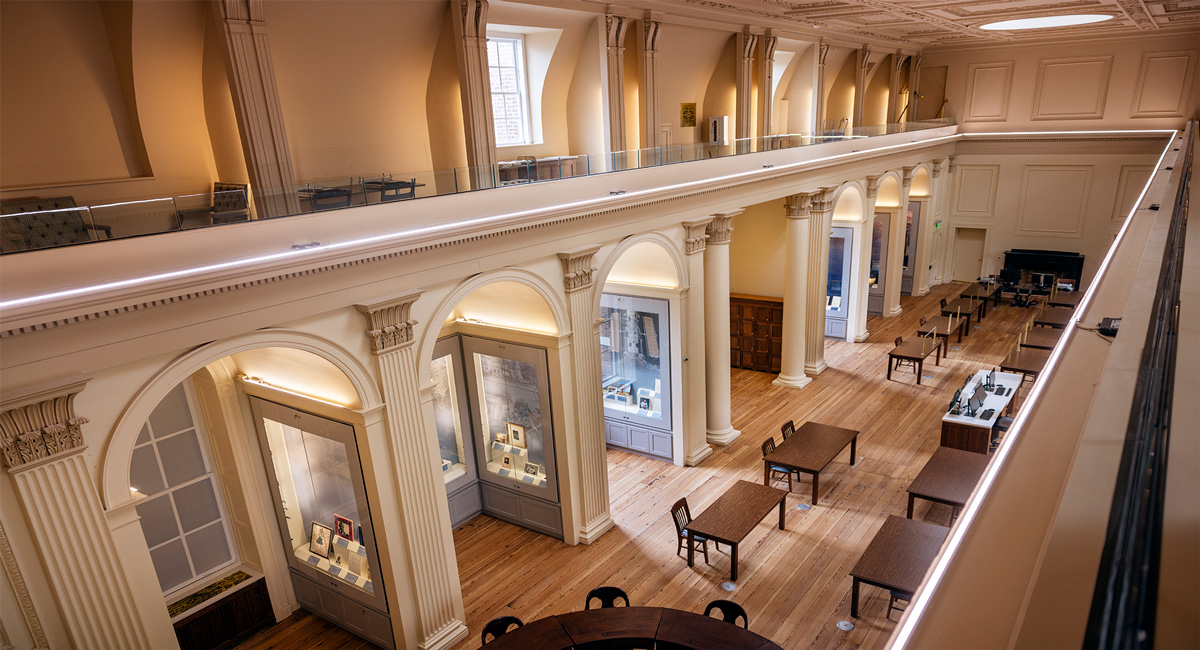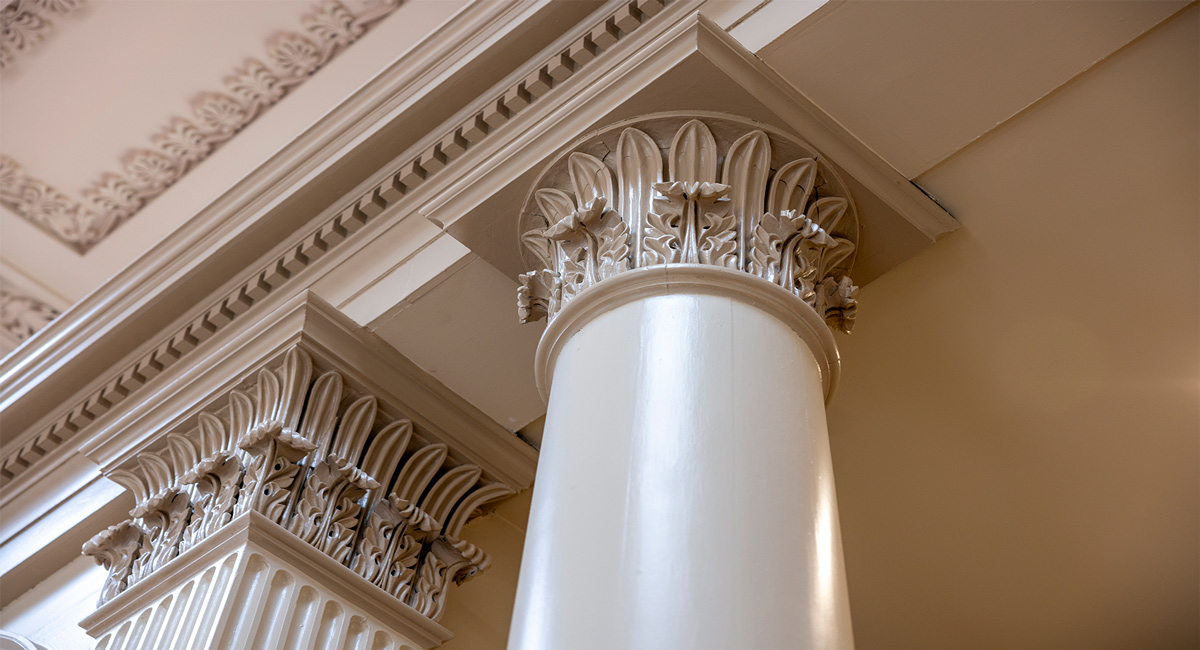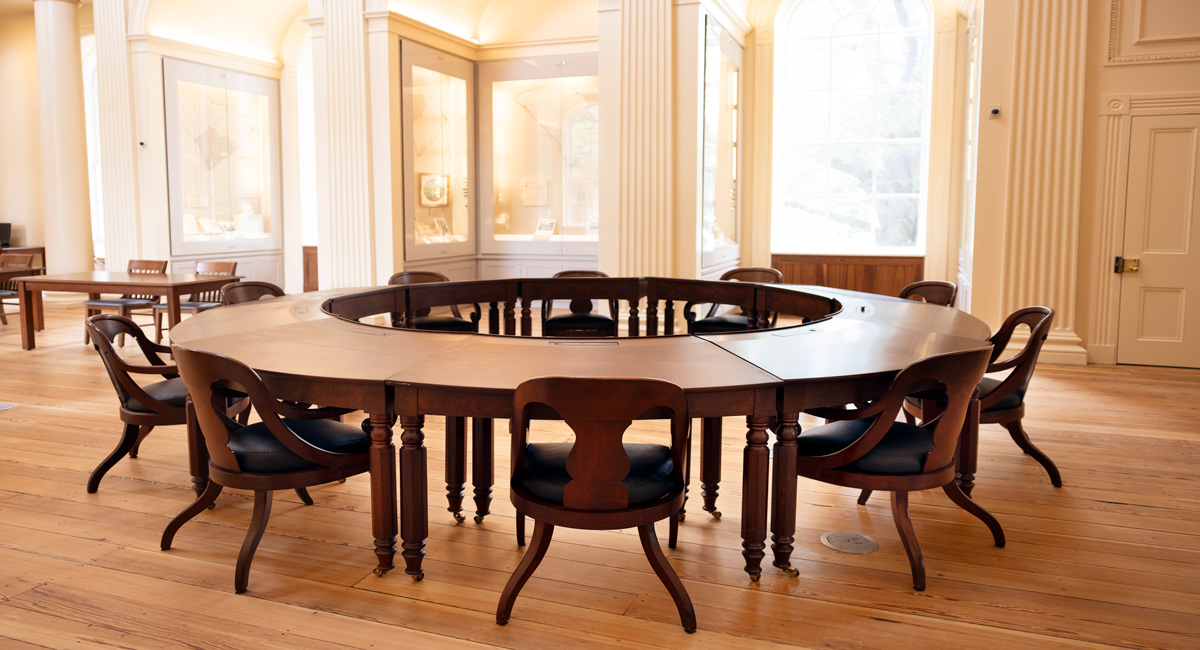video loop of images from south caroliniana library
The South Caroliniana Library holds the history, the stories and the treasures of the state – from its leaders to its ordinary citizens.
The building at the entrance to the University of South Carolina’s historic Horseshoe is easily recognizable by its four white columns out front and its curved staircase to the second-floor reading room, a replica of the room that housed Thomas Jefferson’s personal library in the second Library of Congress.
Major elements of the design are attributed to Robert Mills, a South Carolina native and the country’s first federal architect. Since opening in 1840, the South Caroliniana Library has drawn generations of students, researchers and writers to its stacks, looking for a glimpse into the country’s rich history.
The library has undergone various work through the years, but by 2015 it was ready once again for a substantial overhaul, and its collections were moved off-site. Now, after a more than $10 million renovation, the nation’s oldest free-standing academic library and the most iconic building on campus is once again a showplace — ready to welcome visitors to the home of one of the largest collections of Southern and American history.
“It’s just really been a top to bottom, inside and out renovation and restoration to make sure that the building lasts another 200 years,” says Elizabeth Cassidy West, the university’s archivist.
The birth and growth of Caroliniana
The University of South Carolina’s roots were planted in 1801 as South Carolina College, and the first manuscript — a handwritten, illustrated copy of The Carolinian Florist — was donated to the college library in 1807 by South Carolina judge and Gov. John Drayton.

In its early years, several spots around campus housed the library, including the original Rutledge College and the Library and Science buildings, where it shared space with other departments and services. In 1836, the library had about 4,000 books, according to Creating the South Caroliniana Library, written by USC professor emeritus of art and architectural history John Bryan.
Two years later, in 1838, the college’s Board of Trustees petitioned the S.C. Legislature for $15,000 for a dedicated academic library, and Mills, the architect who designed the Horseshoe’s Maxcy monument as well as the Washington Monument, was enlisted to design it. While his original drawings were elaborate — and expensive — the design was eventually scaled back to stay closer to budget. The final price tag was $23,491.50.
The nation’s first freestanding college library was born.
When the South Caroliniana Library opened in the fall of 1840, it became both the most architecturally distinctive building on campus and home to one of the finest academic libraries in America.
South Caroliniana has stood the tests of time, surviving the Civil War and later benefitting from the stewardship of Richard Greener, the university’s librarian and its first African American faculty member. The library’s collection includes Greener’s letters and his law degree from USC, the only diploma the university has in its collections from the Reconstruction era.
The building remained as the university’s main library for 100 years. When the McKissick building was constructed at the top of the Horseshoe, it became the university’s central library, while South Caroliniana moved to being the keeper of South Carolina’s story.
Its collections tell the state’s and the country’s history through personal, cultural and artistic treasures. While the S.C. Department of Archives focuses on the records of state agencies and the official business of the Palmetto State, South Caroliniana is home to individual’s papers, diaries and letters, along with plantation records, business materials and the state’s largest collection of historical newspapers.

“We have an amazing collection of art and photographs, negatives and an incredible, incredible map collection. We also have the university's historic materials,” says West. “So pretty much anything from the Colonial era up to modern times in a wide variety of formats that covers the life of the state and its people.
“It touches on not just the rich and famous, not just the powerful, but the people that were everyday citizens of the state and come from all different walks of life and backgrounds.”
That includes items such as the journal and other writings of Civil War diarist Mary Boykin Chesnut; a 1683 handwritten letter from French Huguenot Louis Thibou enticing others to the new colony of Carolina; personal papers including letters and financial documents written by the state’s Revolutionary War heroes including Francis Marion and Thomas Sumter; an 1850 hand-colored lithograph of South Carolina College; and 3,500 glass plate negatives by African American photographer Richard Samuel Roberts that document Black life in Columbia in the 1920s and 1930s.
These pieces — and thousands of others — are truly priceless and irreplaceable, and they were stored in a building that lacked the safety measures to protect them. When the South Caroliniana turned 175 years old, university and state leaders knew it was time for a renovation to secure the collections and the building.
Renovations and rebirth
In the decades after South Caroliniana opened its doors in the mid-19th century, some changes and additions were made to the building, which is listed on the National Register of Historic Places.
“It touches on not just the rich and famous, not just the powerful, but the people that were everyday citizens of the state and come from all different walks of life and backgrounds.”
In 1927, two wings were added to the building to house additional materials. In the 1970s, interior and exterior renovations to South Caroliniana brought modern conveniences, including air conditioning. There was a fire detection system installed in the 1980s, but no fire suppression system.
When the decision was made to move the collections out of the library in 2015 for safe-keeping, it was time for renovation — and figuring out how to pay for it.
The S.C. Legislature approved $5 million in special funding for the renovation, and Jim Barrow — a USC alumnus and long-time friend of the university — provided a significant portion of the remainder needed for the more than $10 million project.
Barrow has been a generous supporter of the university and the library. In 2020, he donated a copy of the first federal census of the United States signed by Secretary of State Thomas Jefferson in 1791. He also has given the library a large, hand-colored Audubon print depicting several South Carolina parrots that will hang in the reading room in the newly refurbished South Caroliniana Library.
A 1962 graduate of USC’s business school, Barrow’s ultra-successful Dallas-based investment management firm has allowed him the freedom and opportunities to give back.
“If one can, they should try to give a little something,” Barrow says. “It’s up to us to keep this beautiful library going into the future as those before us did.”
After the funding was secured and the staff and collections were removed from South Caroliniana, the university chose Liollio Architecture in Charleston, a firm well-versed in renovations of historic buildings.
The work took the building down to its shell and created a library true to its 1840 roots — but with conveniences like better temperature control for the public areas, a separate HVAC system to keep the east wing stacks cold and humidity low to preserve the collection, security cameras, and fire detection and suppression systems.

The changes begin at the front door, which are solid wood and not always inviting to visitors who may not have a clue what’s inside. Those original doors have been retained, but new all-glass doors have been installed in front of them. During operating hours, people walking along the Horseshoe can now see — and be welcomed — into the library.
Some offices on the first floor have been replaced with space for displays. The Lumpkin foyer has four display cases offering a brief overview of the building and its collections, while the Johnson Room has exhibits on the university history, natural history in South Carolina and the building’s renovations. Those exhibits will rotate, ensuring a fresh experience for visitors.
The curved stairway from the foyer leads to the second floor, where the reading room remains spectacular, with colors — and the original hardwood floors — now more closely resembling the original 1840 finishes. The ornate ceiling with its three large skylights has been restored. The 12 alcoves in the second-floor reading room, which were home to the bookcases of the early library, are now glass display cases that will show off some of the university’s collections and tell South Carolina’s story to the public.
The university’s librarians encourage visitors to stop by, look at the exhibits and the amazing building and materials. Appointments are available for researchers interested in specific collections.
Meanwhile, the work of telling the story of the state and the country continues, as South Caroliniana and University Libraries acquire and make the collections accessible to all sorts of researchers — from students to historians to academics.
“The renovation of the South Caroliniana Library is a fitting metaphor for libraries today,” says David Banush, dean of libraries at USC. “The library has been thoroughly updated for the future, but in a way that protects and preserves its core mission. It fuses contemporary advances and a timeless cultural memory mission to support research, teaching and outreach.”